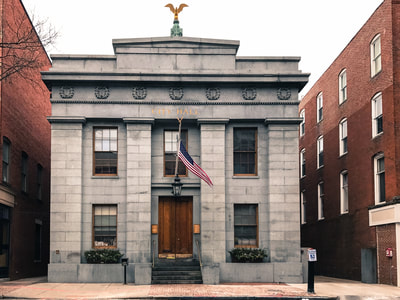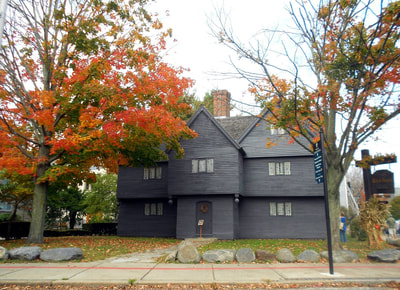|
Since the initiation of the North River Canal planning process in 2000, Historic Salem, Inc. has participated in and supported the goals of the North River Canal Corridor (NRCC) Master Plan and zoning ordinance. All the neighborhoods that abut the NRCC are historic neighborhoods which will be affected by development in the Corridor. A key aspect of the NRCC Master Plan is the importance of neighborhood character as reflected by the customized goals for each section of the Corridor. Another key part of the NRCC zoning ordinance is the review oversight of the Design Review Board (DRB).
The DRB is a board that possesses specialized skills and experience to address urban design issues as they apply in many areas of our city. Their value has been proven in the long tradition of work with the Salem Redevelopment Authority. The Planning Board and City Council have also shown their recognition of the valuable role of the DRB, as evidenced by the recent change that adds DRB review to projects in the Urban Entrance Corridors. We support the work of the Design Review Board throughout the city and find that the iterative nature of their review improves each project that they evaluate. Since the introduction of the NRCC Zoning District in 2003, as far as we know, every development approved by the Planning Board has received a positive recommendation from the DRB. With the recent approval by the Planning Board of a project (16-18-20R Franklin Street) that received a negative recommendation from the DRB there is now precedent to allow projects with a negative recommendation to move forward. This dismissal of the DRB decision undermines the clear intent of the NRCC zoning ordinance. Historic Salem believes that any project, in any zoning district, that must seek a DRB recommendation should receive positive endorsement to qualify for final consideration by other boards. Historic Salem supports action to clarify the DRB relationship with the Planning Board to insure that the intent of the NRCC Master Plan and Zoning Ordinance is honored, and to improve communication and collaboration among all city boards.
2 Comments
Last Saturday Professor Chip Piatti spoke to a full house about the "Language of Architecture." Here are some of the things that stood out to me in the context of Historic Salem's mission to preserve historic resources and ensure that new construction fits in the historic context. #1 - When you build you change the environment three ways: 1-You change the location you are building in. 2-You process resources into building materials. 3-You change the location that the materials come from. How does this relate to our historic city? The intersection of preservation and sustainability is greatly underappreciated in the United States. In Britain, for example, these two disciplines are grouped together under the name “conservation” with specialties in heritage conservation, landscape conservation, or biodiversity conservation. Without discounting the negative effect humans can have on the environment we have to acknowledge that we are nevertheless part of the environment. Our bodies are made of the same carbons that birds and beaver are made of, and just like them, we build shelter and edifice, which then becomes part of our built environment, nestled in our natural environment. Throughout Professor Piatti’s talk he referenced our human connection to the environment, pointing out that one part of a successful city or building is having a connection to the environment. But back to the intersection of preservation and sustainability. When one makes the effort to build something it should balance positive and negative impacts to the environment (natural and civic). It is particularly critical to acknowledge the overall and long-term environmental impact of extracting, processing, shipping and disposal of materials. This seems like a great time to mention that the greenest building is the one already built -- reusing a building results in dramatically less change to the current environment, less need to create new materials (or dispose of old) and less change to the places from which materials originate. "The greenest building is the one...that is already built." #2 Architecture is the intersection of art and engineering – and - |
Categories
All
Archives
February 2024
Follow us on Instagram! |
|
|
Historic Salem, Inc. | 9 North Street, Salem, MA 01970 | (978) 745-0799 | [email protected]
Founded in 1944, Historic Salem Inc. is dedicated to the preservation of historic buildings and sites. Copyright 2019 Historic Salem, Inc. - All Rights Reserved
|

























